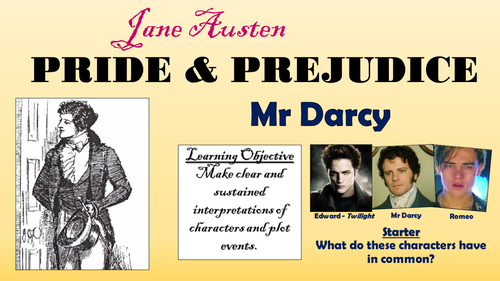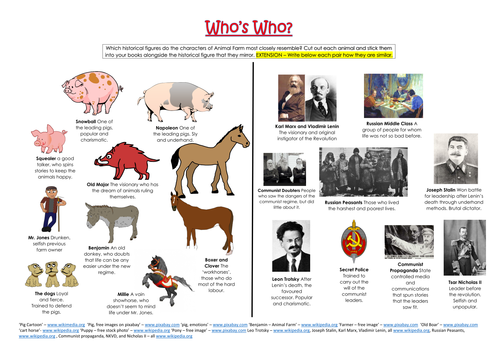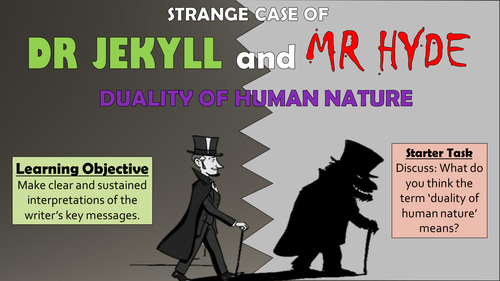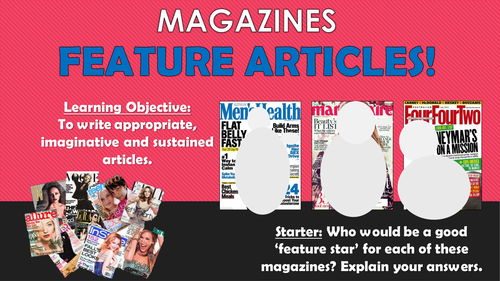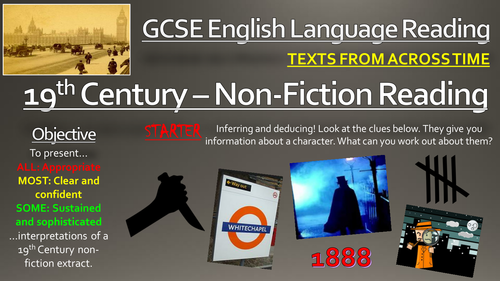
3k+Uploads
1896k+Views
2230k+Downloads
New teachers

Stone Cold - KS3 Comprehension Activities Booklet!
This resource booklet contains a wide range of age-appropriate, engaging, and meaningful comprehension activities for use throughout the reading of Robert Swindells' 'Stone Cold.' Teachers have found them particularly useful in comprehension or guided reading sessions. They are perfect for aiding the progress of children towards meeting the KS3 expectations within the new National Curriculum framework. Children have found these resources engaging, and for teachers there is explicit information within each task regarding which comprehension strands the task is designed to demonstrate. They also relate to key extracts, characters, and themes from the story, ensuring that children gain a deep understanding of the text.
Activities within the booklet include:
- 'Context: Homelessness in London' - to enable students to demonstrate that they can: 'Know the purpose, audience and context of the writing and drawing on this knowledge to support comprehension.'
- 'Swindell's Description' - to enable students to demonstrate that they can: 'Know how language, including figurative language, vocabulary choice, grammar, text structure and organisational features, present meaning.'
- 'Ginger' - to enable students to demonstrate that they can: 'Study setting, plot, and characterisation, and the effects of these.'
- 'Vocabulary Inspector' - to enable students to demonstrate that they can: 'Learn new vocabulary, relating it explicitly to known vocabulary and understanding it with the help of context and dictionaries.'
Plus many, many more activities (the booklet is 21 pages in length!) I've also added it as a PDF in case the formatting differs on your computer.
All images are licensed for commercial use, and are cited on a separate document (included).
Bundle Sale

CPD Training Sessions Bundle!
These CPD sessions offer engaging and original approaches to introducing or revisiting a range of effective pedagogical strategies. Grounded in educational research, these sessions are interactive, well-structured, and have been successfully tried and tested.
The aim of each CPD session is to develop the knowledge, skills, and strategies needed in order to utilise in practice in each key area, and as an aid in achieving these aims, the trainer is supported with:
-Colourful, engaging, and comprehensive PowerPoint presentations;
-Videos for analysis of key techniques;
-A wide range of interactive resources for CPD activities;
-Instructions and plans to assist delivery.
All images and videos are licensed for commercial use, and are cited on the final slide of each PowerPoint.
Bundle Sale

A View from the Bridge Huge Bundle!
THIS BUNDLE CONTAINS ALL OF THE 'A VIEW FROM THE BRIDGE LESSONS, IN ADDITION TO THE COMPREHENSION BOOKLET, THE KNOWLEDGE ORGANISER AND THE POINTLESS GAME!
This engaging, varied, and informative scheme of learning is designed to help students gain understanding, assessment skills, and key interpretations of Arthur Miller’s play ‘A View from the Bridge.’ Made up of a wide-range of interesting and exciting lessons, students should complete this scheme having gathered vital skills in: interpreting the significant meanings of the text, understanding the writer’s ideas within the text, identifying the traits of key characters, settings, and themes, understanding dramatic and language devices, and relating the text to its social and historical context.
Stimulating, visual, and easily adaptable, these lessons provide suggested learning objectives and outcomes for students of a wide-range of abilities - The vast majority of tasks are differentiated to allow for different abilities and needs in your classroom. Each lesson loosely follows this logical learning journey to ensure that students learn in bite-size steps:
- Engaging
- Defining/ Understanding
- Identifying/Remembering
- Analysing/ Creating
- Peer or self evaluating.
All of the lessons are interactive, employ a variety of different teaching and learning methods and styles, and are visually-engaging. Resources, worksheets, and lesson plans are all provided.
Bundle Sale

The Curious Incident of the Dog in the Night-time - Big Bundle!
This resource bundle contains all of the ‘Curious Incident of the Dog in the Night-time’ lessons, the comprehension activities booklet and the knowledge organiser!
The engaging and thought-provoking series of lessons has been devised to provide students with a well-rounded, secure understanding of the text. The entire novel is broken down in to 7 double lesson packs, meaning that there is a total of 14 individual activity sets here.
The Opening Chapters (2-19);
Chapters 23 to 47
Chapters 53 to 83
Chapters 89 to 113
Chapters 127 to 157
Chapters 163 to 197
The End of the Novel (199 to 233).
The comprehensive and colourful PowerPoint presentations guide students through a wide range of activities, including those designed to enhance the following skills: retrieval, understanding vocabulary, inference, explanation, summarising, sequencing, analaysis and deeper thinking activities.
The resources are suitable for students in either KS3 or KS4, depending upon the individual context of the school and students.

Pride and Prejudice - Mr Darcy
In this engaging and informative lesson, students are enabled to make sustained and developed interpretations regarding the introduction and development of the character of Mr Darcy in 'Pride and Prejudice.' In particular, students learn about how he at first appears solely proud and aloof, before studying the events through which the more subtle aspects of his character emerge.
The lesson follows a step-by-step learning journey, in which students learn through:
- Establishing how Darcy fits the criteria of the 'Romantic Hero;'
- Reading and understanding how Darcy is introduced in the novel, using relevant textual evidence;
- Tracking how his character develops through the notable events of the novel;
- Analysing how Austen introduces and develops Darcy's character through plot events and Elizabeth's thoughts;
- Peer assessing each other's learning attempts.
Included is:
- Whole lesson PowerPoint - colourful and comprehensive;
- Extract from Chapter 3;
- 'Development of Darcy' task resources - with teacher answer sheet;
- Supportive and clear essay template;
- Comprehensive lesson plan.
There are also opportunities for group learning, peer assessment, and whole class discussion. These resources were originally taught to GCSE students, but with subtle adaptations they have also been used with both younger and older (up to A Level) students.
All images are licensed for commercial use, and image rights are listed on the last page of the presentation.
Bundle Sale

Of Mice and Men Huge Bundle!
THIS BUNDLE CONTAINS ALL OF THE OF MICE AND MEN LESSONS, THE COMPREHENSION BOOKLET, THE KNOWLEDGE ORGANIZER AND THE POINTLESS GAME!
This engaging, varied, and informative scheme of learning is designed to help students gain understanding, assessment skills, and key interpretations of John Steinbeck’s Of Mice and Men. Made up of a wide-range of interesting and exciting lessons, students should complete this scheme having gathered vital skills in: interpreting the significant meanings of the text, understanding the writer’s ideas within the text, identifying the traits of key characters, settings, and themes, and relating the text to its social and historical context.
Stimulating, visual, and easily adaptable, these lessons provide suggested learning objectives and outcomes for students of a wide-range of abilities - The vast majority of tasks are differentiated to allow for different abilities and needs in your classroom. Each lesson loosely follows a logical learning journey to ensure that students learn in bite-size steps:
- Engaging
- Defining/ Understanding
- Identifying/Remembering
- Analysing/ Creating
- Peer or self evaluating.
All of the lessons are interactive, employ a variety of different teaching and learning methods and styles, and are visually-engaging. Resources, worksheets, and lesson plans are all provided. There is also a fun ‘Pointless’ Game included, to test your students’ knowledge of the text!

Animal Farm: Old Major's Dream and The Revolution!
These resources enable students to understand and analyse the Old Major’s dream and the events of the animal revolution, in the opening two chapters of George Orwell’s Animal Farm. More precisely, students learn to make clear and accurate interpretations about events and characters, with appropriate links to the Orwell’s allegory and relationship to context.
Students learn through the following tasks:
- Gauging and collaborating previous knowledge through a discussion-based starter task;
- Reading the first two chapters and demonstrating their understanding through a related activity sheet;
- Developing their understanding of characters and context through a a making links activity;
- Analysing the allegorical nature of the opening chapters by further exploring the connections between characters and contexts;
- Peer assessing their partners' learning attempts.
The following resources are provided:
- Engaging and colourful step-by-step PowerPoint (includes links for video)
- Teacher lesson guidance/plan;
- Chapters 1 and 2 worksheet;
- Making Links Activity Sheet (1x more difficult, 1 x easier);
- Copies of Chapters 1 and 2.
All images and videos are licensed for commercial use, and are cited on the final slide of the PowerPoint. Note - internet connection is needed if you plan to use the video.

Dr Jekyll and Mr Hyde: Duality of Human Nature!
This engaging and informative lesson enables students to make sustained and insightful interpretations of the theme of duality within Stevenson’s ‘Strange Case of Dr Jekyll and Mr Hyde.’ In particular, students explore the differences in personality between Jekyll and Hyde, and infer Stevenson’s key messages about the duality of human nature.
The lesson follows a step-by-step learning journey, in which children learn through:
- Defining and understanding the belief in the duality of human nature across history;
- Reading and comprehending Jekyll's view of the duality of human nature in the final chapter;
- Comparing and contrasting the personalities of Jekyll and Hyde;
- Retelling the same event from the viewpoint of both Jekyll and Hyde;
- Analysing Stevenson's key message about the duality of the mind;
- Peer assessing each other's learning attempts.
Included is:
- Whole lesson PowerPoint - colourful and comprehensive;
- Extract from the final chapter;
- Jekyll's duality worksheet (and answer sheet for teachers);
- Analysis template with success criteria for creating well-structured responses;
- Comprehensive lesson plan.
There are also opportunities for group learning, peer assessment, and whole class discussion. These resources were originally taught to GCSE students, but with subtle adaptations they have also been used with KS3 and A Level Students.
All images are licensed for commercial use, and image rights are listed on the last page of the presentation.

The Five Oceans - Knowledge Organiser!
This clear, detailed and visually-appealing resource offers a complete reference point for students revising knowledge relating to the five oceans, as a part of their study of locational knowledge in geography. It contains comprehensive sections on:
Overview and world map;
The Five Oceans Facts;
The Five Oceans by Size;
Deepest Points in the Oceans;
Interesting Ocean Features;
Top Ten Ocean Facts.
The resource is designed to be printed onto A3, and is provided as both a PDF and a Word version (so that you can edit if you want to). All images used are licensed for commercial use and are cited on a separate document (included). The resource is most suitable for students in KS1 or KS2.

Animal Farm Comprehension Activities Booklet!
This resource booklet contains a wide range of age-appropriate, engaging, and meaningful comprehension activities for use throughout the reading of George Orwell's 'Animal Farm.' Teachers have found them particularly useful in exam revision, comprehension tasks, or guided reading sessions. They are perfect for aiding the progress of students towards meeting the KS4 expectations within the new National Curriculum framework - this makes the tasks suitable for all examining bodies. Students have found these resources extremely engaging, and for teachers there is explicit information within each task regarding which comprehension strands the task is designed to demonstrate. They also relate to key extracts, characters, and themes from the story, ensuring that students gain a deep understanding of the text.
Activities within the booklet include:
- 'Context: The Russian Revolution' - to aid students with 'Drawing on knowledge of the purpose, audience and context of the writing, including its social, historical and cultural context and the literary tradition to which it belongs, to inform evaluation;'
- 'Orwell's Description' - to aid students with 'Analysing a writer’s choice of vocabulary, form, grammatical and structural features, and evaluating their effectiveness and impact;'
- 'Napoleon' - to aid students with 'Seeking evidence in the text to support a point of view, including justifying inferences with evidence;'
- 'Editing the Text' - to aid students with 'Making an informed personal response, recognising that other responses to a text are possible and evaluating these.'
Plus many, many more activities (the booklet is around 30 pages in length!) I've also added it as a PDF in case the formatting differs on your computer.
All images are licensed for commercial use, and are cited on a separate document (included).

Frankenstein: The Portrayal of Women!
This engaging and informative lesson aims to improve students’ understanding of the portrayal of women in Mary Shelley’s Frankenstein. The lesson places a particular focus upon the perceived role and characteristics of women in the late 1700s, and compares this to the manner in which they are presented in the text. By the end of the lesson, students demonstrate an ability to argue whether they think Shelley’s portrayal of women challenges or recycles existing ideas of women living at the time.
The lesson follows a step-by-step learning journey, in which children learn through:
- Understanding the social and historical context of life for women in the late 1700s;'
- Making links between contextual understanding and what is noted from the text;
- Reading and understanding key extracts from chapters 8, 22, and 23 - extracts that provide exposure to the female characters in the text;
- Inferring, and interpreting the key events of the extracts, and considering the impression that is given of women by Shelley;
- Arguing whether they feel that Shelley recycles or challenges the role of women at the time, using a purpose-made essay template;
- Peer assessing each other's learning attempts.
Included is:
- Whole lesson PowerPoint - colourful and substantial; (including an animated Frankenstein's monster to guide them through the lesson);
- Inferring and interpreting worksheet (and a teacher answer sheet);
- Extracts from Chapters 8, 22, and 23;
- The role of women worksheet;
- Analysis template with success criteria for creating well-structured responses;
- Comprehensive lesson plan.
There are also opportunities for group learning, peer assessment, and whole class discussion. This was originally taught to middle-ability year 9/10 groups, but can easily be differentiated for groups of different ages and abilities.
All images are licensed for commercial use, and image rights are listed on the last page of the presentation.

Magazines - Writing Feature Articles!
This lesson enables students to plan and create their own interesting, detailed, and imaginative feature articles. Through analysing existing feature articles, and noting their features of subject matter, language, and structure, students create articles that are highly appropriate to the genre and audiences of different magazines.
Over the course of their learning journey, students:
- Define and exemplify what feature articles are;
- Identify and understand the different language and subject matter elements are within feature articles;
- Analyse the language techniques and structures used within a model example of a feature article;
- Write their own imaginative and appropriate front covers;
- Peer and self assess each other's front cover attempts.
The resources include:
-Visually engaging whole-lesson PowerPoint;
-A colourful and clear helpsheet for writing to explain;
-Template for planning feature articles;
-Andy Murray feature article for analysis;
-Helpful and comprehensive step-by-step lesson plan.
All images are licensed for commercial use, and are cited on the final page of the slide. NOTE - Internet access is preferable for the planning task.
Bundle Sale

Teaching and Learning CPD Bundle!
These teaching and learning CPD sessions offer engaging and original approaches to introducing or revisiting a range of effective pedagogical strategies. Grounded in educational research, these sessions are interactive, well-structured, and have been successfully tried and tested.
The aim of each teaching and learning CPD session is to develop the knowledge, skills, and strategies needed in order to utilise in practice in each key area, and as an aid in achieving these aims, the trainer is supported with:
-Colourful, engaging, and comprehensive PowerPoint presentations;
-Videos for analysis of key techniques;
-A wide range of interactive resources for CPD activities;
-Instructions and plans to assist delivery.
All images and videos are licensed for commercial use, and are cited on the final slide of each PowerPoint.

Much Ado About Nothing - KS3 Comprehension Activities Booklet!
This resource booklet contains a wide range of age-appropriate, engaging, and meaningful comprehension activities for use throughout the reading of William Shakespeare's 'Much Ado About Nothing.' Teachers have found them particularly useful in comprehension or guided reading sessions. They are perfect for aiding the progress of children towards meeting the KS3 expectations within the new National Curriculum framework. Children have found these resources extremely engaging, and for teachers there is explicit information within each task regarding which comprehension strands the task is designed to demonstrate. They also relate to key extracts, characters, and themes from the story, ensuring that children gain a deep understanding of the text.
Activities within the booklet include:
- 'Context: Life in Shakespeare's Times' - to enable students to demonstrate that they can: 'Know the purpose, audience and context of the writing and drawing on this knowledge to support comprehension.'
- 'Shakespeare's Description' - to enable students to demonstrate that they can: 'Know how language, including figurative language, vocabulary choice, grammar, text structure and organisational features, present meaning.'
- 'Hero' - to enable students to demonstrate that they can: 'Study setting, plot, and characterisation, and the effects of these.'
- 'Vocabulary Inspector' - to enable students to demonstrate that they can: 'Learn new vocabulary, relating it explicitly to known vocabulary and understanding it with the help of context and dictionaries.'
Plus many, many more activities (the booklet is 22 pages in length!) I've also added it as a PDF in case the formatting differs on your computer.
All images are licensed for commercial use, and are cited on a separate document (included).

New GCSE English Language Reading: 19th Century Non-Fiction
These informative and engaging resources enable students to build the skills needed to interpret and analyse 19th Century non-fiction texts. This will aid students through the new Paper 2 Section A of GCSE English Language - for which they need to become confident readers of 19th, 20th, and 21st Century non-fiction texts. These resources give students a strong foundation of knowledge of features of non-fiction texts in the 19th Century, using newspaper stories from the time based on 'Jack the Ripper' as the predominant examples. There are easily enough resources for at least two lessons within this resource pack.
Students learn through the following tasks:
- Inferring and deducing contextual knowledge through an interactive starter task;
- Understanding the features of London in 1888 through a video introduction;
- Building close reading skills through a study of a non-fiction extract about Jack the Ripper;
- Answering exam-style questions interpreting and inferring the key meanings in the text;
- Using models and templates to write extended analysis responses about the language used in the non-fiction extract;
- Peer assessing their partners' learning attempts.
The following resources are provided:
- Engaging and colourful step-by-step PowerPoint;
- Jack the Ripper newspaper extract;
- Teacher lesson guidance;
- Interpretation worksheet;
- Analysis worksheet;
- Writing to analyse.
All images are licensed for commercial use, and are cited on the final slide of the PowerPoint.
Bundle Sale

An Inspector Calls Huge Bundle!
THIS HUGE BUNDLE PACK CONTAINS ALL OF THE 'AN INSPECTOR CALLS LESSONS, IN ADDITION TO THE COMPREHENSION BOOKLET, THE KNOWLEDGE ORGANISER, AND THE POINTLESS GAME!
This engaging, varied, and informative scheme of learning is designed to help students gain a valuable understanding of J.B Priestley’s classic play ‘An Inspector Calls.’ The lessons enable students to gain a comprehensive understanding of the key features of plot, character, context, and language, in addition to considering the key messages being offered by Priestley.
All of the resources that you need are included in the bundle: informative and engaging whole lesson PowerPoints, worksheets, activities, and lesson plans.
The bundle is made up of a wide-range of interesting and exciting lessons, including:
- The Context of the Play;
- Arthur Birling;
- Priestley’s Dramatic Devices;
- Sheila and Gerald;
- Sybil and Eric Birling Double Lesson;
- Inspector Goole (Priestley’s message)
- The An Inspector Calls Pointless Game.
- The An Inspector Calls Comprehension Activity Booklet.
Stimulating, visual, and easily adaptable, these lessons provide suggested learning objectives and outcomes for students of a wide-range of abilities - The vast majority of tasks are differentiated to allow for different abilities and needs in your classroom. Each lesson loosely follows this logical learning journey to ensure that students learn in bite-size steps:
- Engaging
- Defining/ Understanding
- Identifying/Remembering
- Analysing/ Creating
- Peer or self evaluating.
All of the lessons are interactive, employ a variety of different teaching and learning methods and styles, and are visually-engaging.
Bundle Sale

A Christmas Carol Huge Bundle!
THIS BUNDLE CONTAINS ALL OF THE ‘A CHRISTMAS CAROL’ LESSONS, IN ADDITION TO THE 30-PAGE COMPREHENSION BOOKLET, THE KNOWLEDGE ORGANISER, AND THE POINTLESS GAME!
This engaging, varied, and informative scheme of learning is designed to help students gain understanding, assessment skills, and key interpretations of Charles Dickens’ A Christmas Carol. Made up of a wide-range of interesting and exciting lessons, students should complete this scheme having gathered vital skills in: interpreting the significant meanings of the text, understanding the writer’s ideas within the text, analysing key characters, settings, and themes, and understanding Dickens’ language devices.
Stimulating, visual, and easily adaptable, these lessons provide suggested learning objectives and outcomes for students of a wide-range of abilities - The vast majority of tasks are differentiated to allow for different abilities and needs in your classroom. Each lesson loosely follows this logical learning journey to ensure that students learn in bite-size steps:
- Engaging
- Defining/ Understanding
- Identifying/Remembering
- Analysing/ Creating
- Peer or self evaluating.
All of the lessons are interactive, employ a variety of different teaching and learning methods and styles, and are visually-engaging. Resources, worksheets, and lesson plans are all provided.
Bundle Sale

Private Peaceful Big Bundle!
THIS BUNDLE CONTAINS ALL OF THE PRIVATE PEACEFUL LESSONS, IN ADDITION TO THE COMPREHENSION BOOKLET, THE KNOWLEDGE ORGANISER AND THE POINTLESS GAME!
This engaging, varied, and informative collection of lessons is designed to help students gain understanding, assessment skills, and key interpretations of Michael Morpurgo’s’ ‘Private Peaceful.’ Made up of a wide-range of interesting and exciting lessons, students should complete the lessons having gathered vital skills in: interpreting the significant meanings of the text, understanding the writer’s ideas within the text, identifying the traits of key characters, settings, and themes, understanding dramatic and language devices, and relating the text to its social and historical context.
Stimulating, visual, and easily adaptable, these lessons provide suggested learning objectives and outcomes for students of a wide-range of abilities - The vast majority of tasks are differentiated to allow for different abilities and needs in your classroom. Each lesson loosely follows this logical learning journey to ensure that students learn in bite-size steps:
Engaging
Defining/ Understanding
Identifying/Remembering
Analysing/ Creating
Peer or self evaluating.
All of the lessons are interactive, employ a variety of different teaching and learning methods and styles, and are visually-engaging. Activity resources, worksheets, and lesson plans are all provided.

Ozymandias - Percy Bysshe Shelley
This engaging, comprehensive lesson provides an interesting and highly-informative study of Percy Bysshe Shelley's power and conflict poem: 'Ozymandias.' Throughout the lesson, students gain a detailed understanding of the poem, with a particular focus upon the content, language, and structural features employed by Shelley. By the end of the lesson, students demonstrate their knowledge of the text analytically, through assured, appropriate, and sustained interpretations.
The lesson follows a step-by-step learning journey, in which children learn through:
- Defining the key concept of power, and considering its role and implications in man's actions;
- Securing contextual understanding of both Ozymandias the ruler, and Percy Bysshe Shelley the poet;
- Reading and interpreting the poem, using a provided line-by-line analysis, and interactive group activities;
- Developing their understanding through inferring and analysing key language and structural choices;
- Analysing how the theme of power is explored through Shelley's content, language, and structure;
- Peer assessing each other's learning attempts.
Included is:
- Whole lesson PowerPoint - colourful and substantial; (including hyperlinks to informative and engaging videos)
- Copy of poem;
- Content, language and structure mind map;
- Deeper thinking worksheet;
- Analysis template with success criteria for creating well-structured responses;
- Comprehensive lesson plan.
There are also opportunities for group learning, peer assessment, and whole class discussion. This was originally taught to middle-ability year 9/10 groups, but can easily be differentiated for groups of different ages and abilities.
All images are licensed for commercial use, and image rights are listed on the last page of the presentation.

An Inspector Calls: Arthur Birling
This interesting and engaging lesson enables students to build their understanding Arthur Birling, one of the chief protagonists in J.B. Priestley’s ‘An Inspector Calls.’ In particular, students learn about his characteristics, his attitudes and opinions towards the world around him and other people, and also his relevance to Priestley’s social and historical context.
The lesson follows a clear, logical, bite-size learning journey, which guides students towards differentiated learning objectives. Over the course of this journey, they become able to:
- Recall and understand the key features of Birling's character profile;
- Link Birling to the social and historical context of the play;
- Understand how Birling's character is significant in terms of Priestley's key message;
- Read and understand the section of the play in which Birling is interviewed by the inspector;
- Analyse key quotations by and about Birling in the text;
- Read and understand the opening of the play;
- Create a diary-entry piece in which they consider Birling's morals and sense of responsibility for the death of Eva Smith;
-Peer/self-assess learning attempts.
This resource pack includes:
- A visually engaging whole-lesson PowerPoint presentation;
- Images of Birling to be annotated for the starter task;
- A clear and interesting worksheet for the introductory task;
- An extract from Act 1 of the play for students to read and interpret;
- P.E.E template for students to complete their character analysis;
- A detailed lesson plan, complete with what the teacher and students should aim to achieve at each stage of the lesson.
All images are licensed for commercial use, and are cited on the final slide of the PowerPoint.





